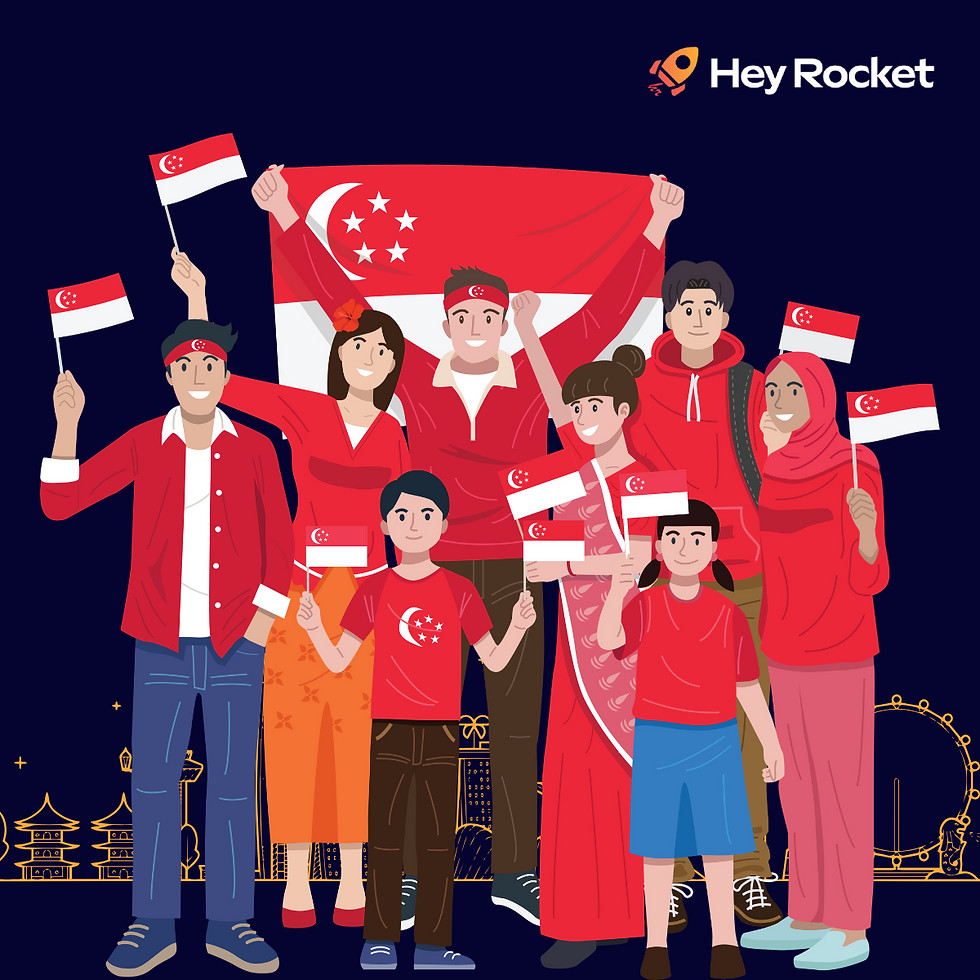Resilience in Hiring: How Singapore’s National Day Rally Inspires Workforce Evolution
- Ma

- Aug 19
- 4 min read

The Rally’s Call for Resilience
On 17 August 2025, Prime Minister Lawrence Wong delivered his first National Day Rally (NDR) as Singapore’s new leader, marking the nation’s 60th year of independence. It wasn’t just a celebratory moment; it was a sobering call to action.
His central message? Singapore must learn to adapt faster and build resilience, both as a society and an economy. While addressing rising global uncertainties—tariff wars, technology disruption, and a shifting geopolitical balance—PM Wong made one thing clear:
“Job security must remain our top priority. Singaporeans must know that opportunities will be there, even as industries change.”
This message extends far beyond government policy. For businesses in Singapore, it highlights a core truth: hiring resilience is no longer optional; it’s survival.
Why Resilience Matters Now
A History of Balancing Local & Foreign Talent
For decades, Singapore has pursued a dual talent strategy:
Attracting global expertise to fill high-skill gaps in industries like engineering, finance, and biotech.
Investing in local upskilling, ensuring Singaporeans could transition into emerging roles.
This model powered the city-state’s growth, turning it into Asia’s hub for advanced manufacturing, green energy, and precision engineering.
But cracks are showing.
The last few years have tested this system like never before:
COVID-19 lockdowns froze global mobility, exposing reliance on foreign worker pipelines.
Tariff shocks—like the U.S. “Liberation Day” tariff policy that rattled Asian supply chains—caused production cycles to swing unpredictably.
Aging workforces in nearby markets such as Japan and South Korea intensified competition for skilled professionals.
AI disruption created opportunities but also fear—especially among mid-career professionals unsure whether retraining would keep them relevant.
The result? Companies are caught between rigid hiring models and an unpredictable market. Those who rely only on permanent headcount find themselves unable to pivot when demand shifts.
Resilient hiring is the new playbook.
The Struggle: When Rigidity Fails
Let’s take a real-world scenario from recent years.
A mid-sized precision engineering firm in Singapore secured a multi-million-dollar contract to produce turbine components for a European renewable energy client. It was a dream deal—but the project required metallurgical engineers with niche skills in cold forging and heat treatment.
Upskilling locals took too long; by the time training was complete, deadlines had already been missed.
Regional hiring from Southeast Asia didn’t match the technical expertise demanded.
Consultants offered guidance but couldn’t roll up their sleeves on the production floor.
As deadlines slipped, the client hinted at pulling out and reallocating the project to competitors. For the firm, it wasn’t just about money—it was a credibility crisis.
This story reflects a wider reality: in a volatile world, relying on rigid, local-only models is risky. Without resilience, one project delay can cascade into lasting reputational damage.
The Turning Point: Learning from Global Models
Countries facing similar workforce pressures offer useful lessons:
Japan, struggling with a shrinking labor pool, has leaned on foreign recruitment and robotics to sustain manufacturing. It highlights that innovation and openness must go hand in hand.
Australia, with its cyclical mining industry, relies heavily on contract and temporary staffing, scaling its workforce up and down as commodity prices shift.
The takeaway? Resilient hiring systems are not built on permanence—they are built on adaptability.
For Singaporean businesses, this means rethinking old assumptions: instead of asking “how many permanent staff do we need?”, leaders should ask “how do we design a workforce that flexes with demand?”
The Solution: Resilient Hiring in Practice
Here’s how resilience translates into action:
Cross-border recruitment: When specific expertise isn’t available locally, tap into global pipelines—from biotech researchers in Japan to renewable specialists in Australia or machinists from Eastern Europe.
EOR (Employer of Record) models: Instead of setting up costly overseas entities, businesses can compliantly hire foreign professionals through an EOR partner—ensuring speed, compliance, and flexibility.
Contract & temp-to-perm models: Trial periods reduce risk while allowing companies to adjust workforce composition as projects evolve.
This isn’t about replacing local talent. It’s about complementing Singapore’s workforce with global expertise—a partnership that strengthens both productivity and knowledge transfer.
Why Resilient Hiring in Singapore Matters After the National Day Rally
PM Wong’s National Day Rally vision is clear and we align directly with the Prime Minister’s rallying call for resilience. Our approach is built for businesses that need speed, flexibility, and global reach:
We partner with trusted networks in Europe, China, and Southeast Asia to source niche talent.
We handle Singapore’s compliance, work passes, and relocation so you avoid costly missteps.
We design hiring models—whether contract, permanent, or EOR—that match your risk appetite and business cycles.
Resilient hiring isn’t about filling seats. It’s about building a workforce that absorbs shocks and drives growth—no matter what the global economy throws next.
TL;DR
Singapore’s National Day Rally 2025 underscored the need for resilience in jobs and industries. With global disruptions—from tariffs to aging workforces—traditional rigid hiring is no longer enough. Companies must embrace resilient hiring in Singapore through flexible, cross-border, and compliant recruitment models. We translate this vision into practice, helping firms in Singapore tap into global talent pipelines while staying lean, agile, and future-ready.
Source:



Comments